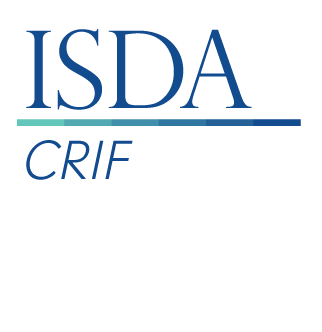Key Benefits
The ISDA CRIF provides a standardized format for the exchange and reporting of risk data, which avoids every firm and regulator having to address the common challenge of capturing and organizing complex risk data independently. This reduces duplication of effort and improves efficiency. Standardization also improves the comparability of risk data, enabling regulators to interpret and analyze this information on a global basis more easily.
Contact
For more information about the ISDA SIMM, which uses the CRIF to facilitate initial margin reconciliations, click here.
For more information about ISDA Analytics, which uses the CRIF for benchmarking of standardized approach capital models, contact Analytics@isda.org.
About the ISDA CRIF
Risk management in derivatives has changed beyond recognition over the past decade, with the introduction of clearing, margining and trade reporting regulations, as well as the rollout of revised capital requirements, including new standardized approach capital models. Regulators increasingly now require firms to report detailed portfolio risk data, including in the context of benchmarking their capital models. Risk data reporting should enhance transparency and standardization, but there is significant scope for inconsistency in the reporting, analysis and interpretation of this information.
The ISDA CRIF addresses this problem by providing a standard template for the exchange of risk data. It is available as a simple column-based, machine-readable file, governed by a set of rules documented in ISDA risk data standards, which are available for each standard model.
The ISDA CRIF is a simple, robust and comprehensive standard for risk data that organizes and stores data inputs needed to compute ISDA SIMM margin requirements and capital amounts for the Fundamental Review of the Trading Book standardized approach (FRTB-SA), the standardized approach for credit valuation adjustment (SA-CVA) and the standardized approach for counterparty credit risk (SA-CCR).
The ISDA CRIF is used by a range of different entities, including:
- ISDA members for model backtesting, benchmarking and other validation processes.
- Vendors that want to provide ISDA SIMM margin calculations and FRTB-SA, SA-CVA and SA-CCR capital calculations, as well as capital management services.
- Regulators collecting portfolio risk data from supervised firms to support standardized approach benchmarking exercises.
- New firms that may benefit from the synergies offered by the ISDA CRIF standards in their interactions with regulators, vendors and ISDA.
Features
- The format of the ISDA CRIF is specified for the relevant risk factors associated with each standard model and can be extended to handle new risk factors.
- Each CRIF file is machine readable and can be automatically processed by the relevant standard models to compute margin and capital amounts.
- The CRIF is currently used to generate ISDA SIMM margin calculations and standardized approach capital benchmarking analyses.
- The risk factor information in a CRIF file enables users to easily identify the key drivers behind different ISDA SIMM margin amounts calculated for the same bilateral portfolio, or different capital amounts calculated for the same hypothetical benchmarking portfolio.
- The ISDA CRIF can be implemented as an Excel file or in any other column-based file extensions, with defined data fields arranged in columns.
- The elements of a CRIF file can be textual (string), data or numerical, and their types can be context dependent.
Standard Models Using CRIF
- ISDA SIMM
- FRTB-SA
- SA-CVA
- SA-CCR
Fact Sheets/Presentations
- June 2023: Are you faced with Initial Margin Calculation Challenges?
- May 2021: Whitepaper: The Future of Risk, Capital and Margin Reporting
Press Releases/Blogs
- June 9, 2021: A Standard for Risk Data


